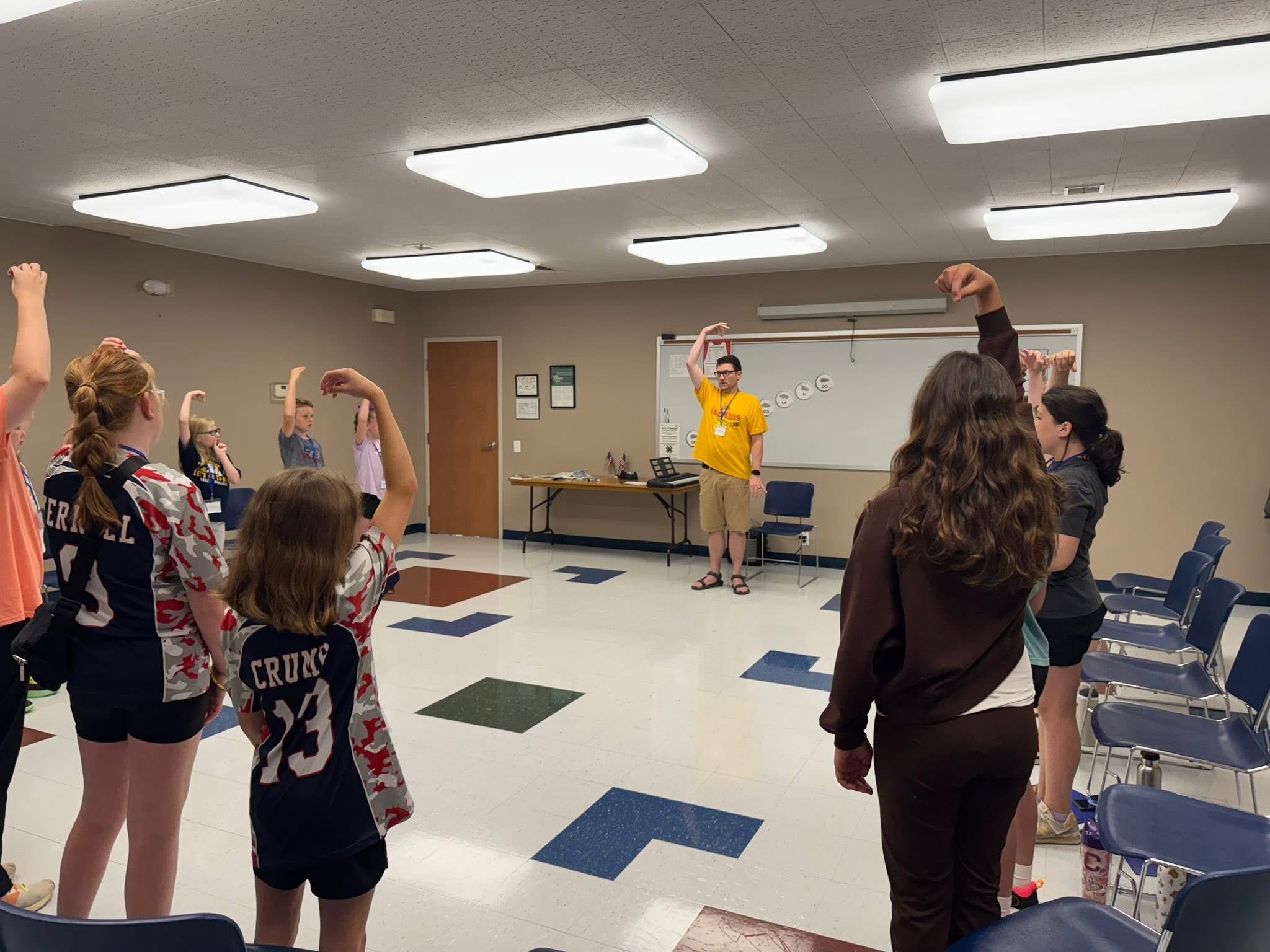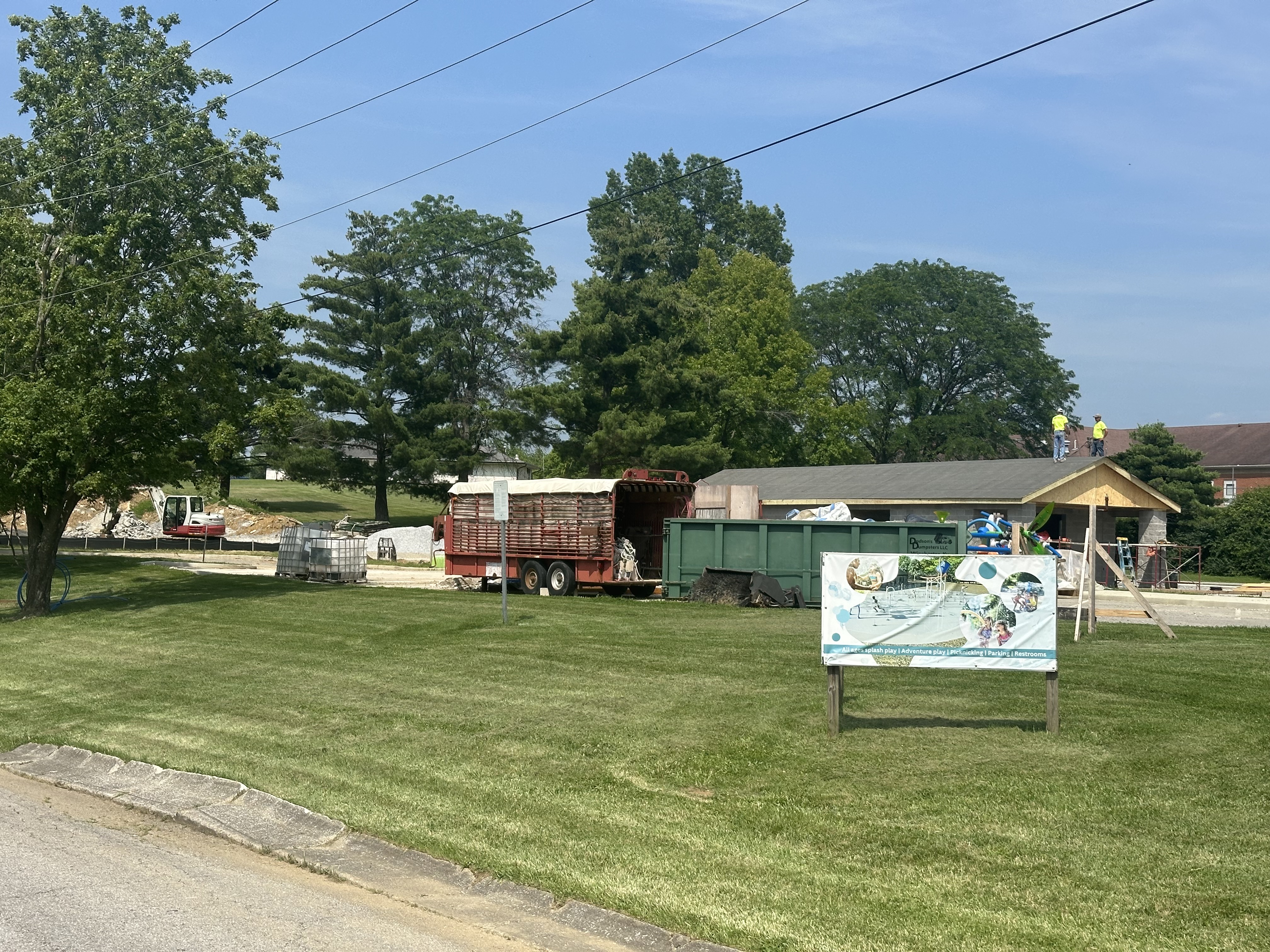Cardinals Nest is CCPS’ answer to child care crisis
Published 4:11 pm Thursday, January 4, 2024




|
Getting your Trinity Audio player ready...
|
Clark County Public Schools (CCPS) staff reported back for the new semester on Tuesday, and for those with children, it was a day to celebrate.
The Cardinals Nest, located at 100 Vaught Road in the old Phoenix Academy building, opened its doors for the first time; officially making the district one of the few in the state to offer an affordable child care facility for its staff.
Thirty-five students from ages six weeks to five years old are attended to by eight dedicated staff members for a full day – some are there for after-preschool care – of fun and learning Monday through Friday.
The daycare’s opening has come at a fortuitous time, as the cost and availability of childcare have become a burden to parents in Clark County and across Kentucky over the past few years.
“The cost of child care is very expensive. In today’s time, many families are struggling economically,” said the daycare’s director, Gail Ricketts.
According to the Kentucky Center for Economic Policy, more than 50 percent of the commonwealth’s children live in a “child care desert, an area with no available spots for children who need care or more than three kids per available spot.”
The center estimates that Kentucky has lost 1,759 child care providers over the past ten years.
Federal data shows that average Kentucky families spend over $7,600 per child annually.
CCPS employees are charged $18 a day after payroll deductions for their child to attend, making the weekly cost around $90 and the monthly cost around $360.
The cost is well below the Kentucky average of $208 a week and over $800 a month, as reported by a 2023 LendingTree study.
“One employee told us that it is going to save him and his wife $6,000 a year in childcare costs,” said CCPS Human Resources Director Tammy Parrish.
“The fact that we can provide this service for families, in general, not just the school system but for people, I think it makes all the difference in the world,” Ricketts said.
Ricketts is a client as well as the director and understands the hardship many district employees face regarding child care.
“My little girl goes here and if it wasn’t at the rate it was we may not have been able to put her in child care if I worked somewhere else,” she said.
Breakfast and lunch are figured into the price to assist with employee work-life balance.
“Many care centers require food. You have to pack a breakfast or a lunch or a snack. We felt like taking that out of the equation eliminated not only the financial burden but a physical one, too,” Parrish said.
The center will also ensure that employees do not have to miss work due to child care issues.
“So if you have an employee that might miss because their mom or sister can’t babysit, but if we have a consistent center for them that they trust they won’t have to call out,” Parrish said.
So, what did it take for the project to come to fruition?
From idea to reality
To launch such a pioneering project took a lot of “blood, sweat and tears, Parrish said.
The daycare was born from two district needs: providing a head start for students and retaining teachers.
“Clark County does not have universal preschool yet, so we wanted to start giving more kids the opportunity to be ready for kindergarten,” Parrish said.
The daycare staff has worked with Clark County Preschool Principal Jill Blanton to ensure that part of the school’s curriculum is incorporated at the daycare.
“It starts as early as the infant room. They have a daily schedule. It is very structured. They do circle time, and they do art projects … It helps them with structure and getting used to the school setting so that they are acquainted with how things work and won’t feel so overwhelmed when they transition into a school setting,” Ricketts said.
The daycare is also seen as a way to keep teachers in the district.
“What really brought about it was the national teacher shortage. Not only is Clark County experiencing it but Kentucky is. So, when we were looking at retention initiatives and incentives for recruitment, you have to look at different populations,” Parrish said.
District staff has widely disparate needs, and central office administrators considered incentives such as health and fitness club memberships.
However, one incentive stood out on surveys sent out to faculty and staff: child care.
“Daycare was one of the most immense things that our staff said would be a great tool to have,” Parrish said.
CCPS found itself in uncharted waters when it began the project.
“Nobody does it, so we started reaching out to ask people, ‘Have you done this before?’ or ‘Do you know anybody else that has done it?’ What we found is that a couple of people had done it but not to the scope that we wanted to do it,” Parrish said.
According to Parrish, some counties they contacted offered child care inside of a school, and one in northern Kentucky used a grant to set up a daycare.
With no proven path to follow, district officials began studying the process, and fortunately, the $100,000 project was soon right on track.
CCPS Chief Academic Officer & Assistant Superintendent Kelley Fithen solved the issue of finding a space by suggesting the old Phoenix Academy building. Then, the Clark County Preschool offered a model of how daycare might work when it started offering a paid afterschool care program for its students whose parents worked for the district.
Finally, Ricketts was hired to be the director.
Even with taking care of the logistics, getting the facility licensed proved to be a rigorous undertaking itself.
“Daycares are highly regulated by the state,” Parrish said, adding that the facility also had to follow state regulations for public schools.
To get a licensure from the state, a daycare must pass all local fire, coding and zoning inspections. Then, it must pass a preliminary state inspection from the state and then pass a formal inspection once the facility opens for business.
The facility must also carefully follow student-to-teacher ratio guidelines.
“We had to have enough staff to cover the number of children we were planning to provide services for,” Ricketts said. “You have to measure the square foot of the classroom, and that will tell you how many children you can have in there and how many teachers we can have in there.”
All employees must be certified in CPR and first-aid training as well.
An early success
So far, reception to the daycare has been positive.
“It has been nothing short of pure gratitude,” Parrish said about the reaction to the daycare. “Those that are impacted are younger families getting started. They are on the lower end of the pay scale and are just starting their careers … It will ease their mind that their babies are being taken care of so they can focus on their careers.”
Ricketts shared an email she received from a parent after opening day.
“She wanted to let me know that she was so thankful for me and the staff and how easy the transition was for her more than she expected it to be … She was ecstatic about how the whole process went yesterday and thankful for how things were handled,” she said.
There is already a waiting list for infants to be accepted, and more and more employees are calling to enquire about how to enroll their child.
Parrish and Ricketts both agree that this is only the beginning, and there are plans to expand the facility as enrollment increases.
While CCPS is sailing in uncharted waters with the facility, its success could potentially revolutionize the district and the state.









